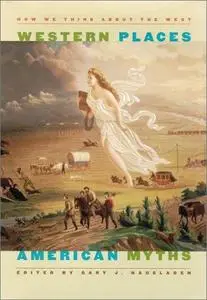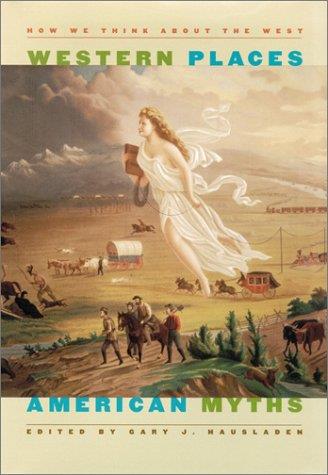Western Places, American Myths: How We Think About the West (Wilbur S. Shepperson Series in History and Humanities) By Gary J. Hausladen
2003 | 360 Pages | ISBN: 0874175313 | PDF | 2 MB
2003 | 360 Pages | ISBN: 0874175313 | PDF | 2 MB
Despite countless past attempts to describe and analyze it, the American West retains an enigmatic quality that continues to attract and intrigue us. As Gary J. Hausladen, editor of "Western Places, American Myths," states, "The power and importance of the American West, ambiguous or not, cannot be overstated. Not just a real geographical region, the West is a mythic concept that repeatedly transcends simple historical-geographical description. For Americans, the West is part of our psyche, an essential part of who we are as a people." The essays in "Western Places, American Myths" are the work of a dozen scholars from several disciplines, all examining the West as both an actual region and as an enduring element of American culture, demonstrating how today's West is the result of a long and continuous process, a constant reinvention and redefining of place. Their essays address such topics as the role of the West in the development of the scholarly discipline of historical geography; the changing role of the ranch and the rancher in Western culture and economy; the role of the West in the development of the National Park System; and the impact of conflicting systems of land tenure and concepts of space on Western development-those of the Native Americans and those of the Anglo-European settlers. The region's minorities are not unnoticed, as evidenced by ruminations on the role of Mormon theology and culture in shaping settlement patterns and the economy of the Intermountain states; the mainstreaming of Hispanic popular culture; the changing role of Native Americans in regional politics and development; and the impact of Western realities on traditional gender roles, as exemplified by the adventures of nineteenth-century British travel writer Isabella Bird. Nor is the mythic quality of the West left unexamined. There are essays on the evolution of gambling in the West, from frontier pastime to economic mainstay; on ghost towns as an element of the West's past and present image; and on the ways that Western films both reflect and shape the myth of the region; and a color photo essay illuminates the visual power of the West's mythic and perceived spiritual qualities. On its own, each essay in this collection makes a powerful contribution to our understanding of the modern West. As a collection, the essays offer a provocative and engaging commentary on the complexity, vitality, tensions, and ceaseless change that characterize this vast and myth-haunted region. For anyone who might think that there is nothing new that can be said about the West, "Western Places, American Myths" rewards its reader with exciting new perspectives and insights, reminding us that the West still contains "mythic places that help us come to grips with our national identity and who we are as a people."



